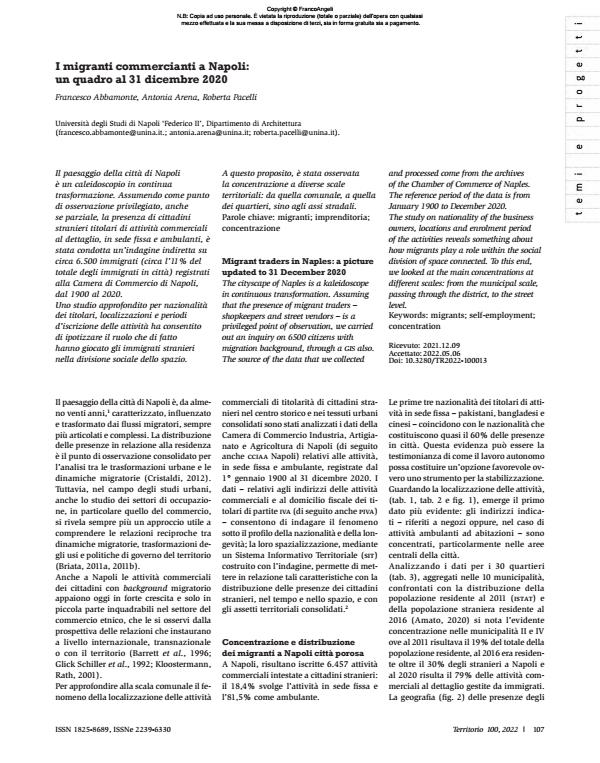Migrant traders in Naples: a picture updated to 31 December 2020
Journal title TERRITORIO
Author/s Francesco Abbamonte, Antonia Arena, Roberta Pacelli
Publishing Year 2022 Issue 2022/100
Language Italian Pages 12 P. 107-118 File size 757 KB
DOI 10.3280/TR2022-100013
DOI is like a bar code for intellectual property: to have more infomation
click here
Below, you can see the article first page
If you want to buy this article in PDF format, you can do it, following the instructions to buy download credits

FrancoAngeli is member of Publishers International Linking Association, Inc (PILA), a not-for-profit association which run the CrossRef service enabling links to and from online scholarly content.
The cityscape of Naples is a kaleidoscope in continuous transformation. Assuming that the presence of migrant traders - shopkeepers and street vendors - is a privileged point of observation, we carried out an inquiry on 6500 citizens with migration background, through a gis also. The source of the data that we collected and processed come from the archives of the Chamber of Commerce of Naples. The reference period of the data is from January 1900 to December 2020. The study on nationality of the business owners, locations and enrolment period of the activities reveals something about how migrants play a role within the social division of space connected. To this end, we looked at the main concentrations at different scales: from the municipal scale, passing through the district, to the street level.
Keywords: migrants; self-employment; concentration
Francesco Abbamonte, Antonia Arena, Roberta Pacelli, I migranti commercianti a Napoli: un quadro al 31 dicembre 2020 in "TERRITORIO" 100/2022, pp 107-118, DOI: 10.3280/TR2022-100013